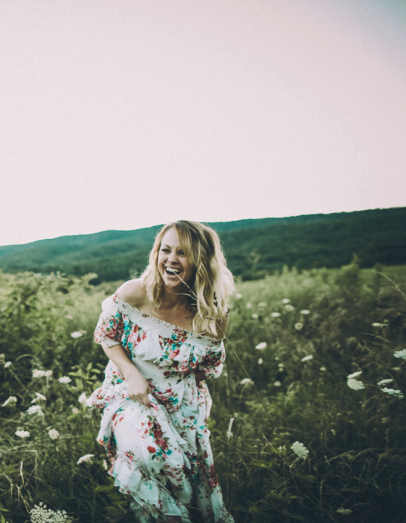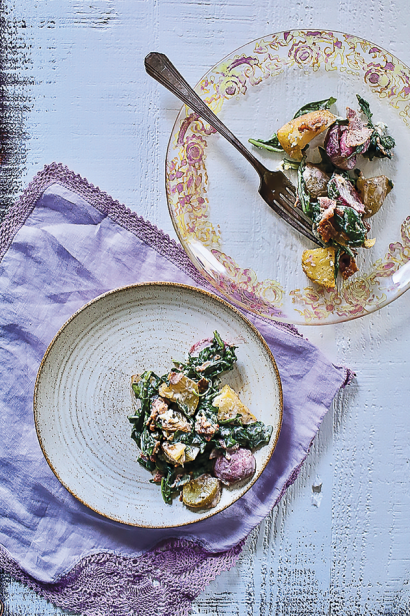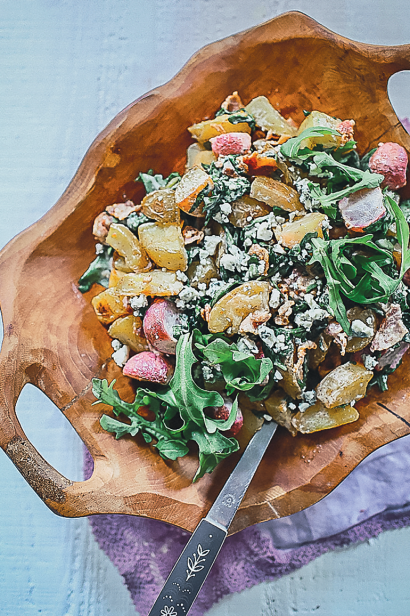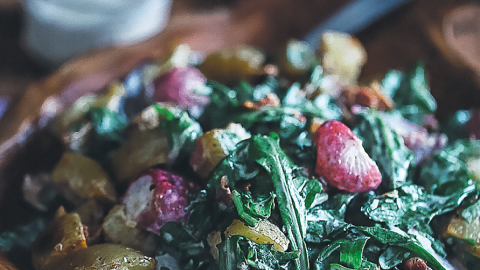Smoke, Roots, Mountain, Harvest
Visit Lauren McDuffie’s blog and you’ll understand quickly the heart of her tagline “an open-ended love letter, culinarily inspired.” McDuffie crafts beautiful stories about her personal life and family history. But what about the food? Isn’t McDuffie a food blogger? “Food gave me something to write about,” says McDuffie, a longtime freelancer who was looking for a creative outlet and, after she began experimenting with photography, “something to aim my camera at.” That doesn’t mean McDuffie isn’t passionate about the food. “It’s how I show people I care,” she says. “I love how food has a way of bringing people together, and how breaking bread is a mechanism for community and relationships.”
She brings that same sensibility to her work. Known for her moody, rustic images, McDuffie styles photo shoots and writes blog posts at “Harvest and Honey” to tell the story of food in her life, including memories, aspirations and more. “I shoot the blog photos to give people a feeling of what it would be like to cook or eat together,” she says. “I want to inspire readers to get into their own kitchens but also to remember their own stories.”
Crafting a culinary memoir
And readers are responding. “Harvest and Honey” earned a finalist distinction in Saveur’s Reader’s Choice Best New Voice Award. McDuffie’s blog also was one of two 2017 winners of the International Association of Culinary Professionals’ Best Narrative Culinary Blog. But the highest honor McDuffie has received so far was landing a cookbook deal with Chronicle Books. Smoke, Roots, Mountain, Harvest, part memoir and part cookbook, is slated for publication in April 2019. The cookbook, which McDuffie hopes to make “accessible and interesting for cooks at all levels,” is organized by season and includes collections of recipes that connect to the personal stories she writes. The cookbook could be categorized as Southern or Appalachian cuisine, but McDuffie, who was born in Lexington, Kentucky, and moved to Blacksburg, Virginia, when she was 12, is quick to clarify.
“It’s not an Appalachian cookbook. It’s a cookbook with a setting,” she says. “Appalachia is a colorful place and often isn’t represented well. There’s grit to this part of the country, but also a warmth.” McDuffie, along with her husband, a chief surgical resident, and their two children, relocated several times over the last 10 years, including stints in St. Louis and Washington, DC. For now, Indianapolis is home, though her stories and recipes have a strong hint of the culture and cuisine of her Appalachian roots. It was this multiplicity of McDuffie’s life reflected in her writing that first caught the eye of her agent.
“Rarely have I seen a cookbook proposal that had so many layers,” says Deborah Ritchken of the Marsal Lyon Literary Agency. “Her personal story of growing up in eastern Appalachia was reflected in the chapter openers, and the headnotes also wove her personal story. Yet the recipes are modern and forward-thinking. They are reminiscent of the food she grew up with but are not decidedly Southern which, for me, was a plus because they are recipes for a broader range of reader.”
Getting the deal
While McDuffie’s approach to cookbook writing may be unique, the story of how she landed the cookbook deal is not. Basically, she followed the script so many other writers of all genres have followed: the idea, which came to her in a café; the Google search for “how to write a cookbook proposal”; and the multiple rejections. One turndown was particularly memorable because a potential agent called to tell her that her cookbook would never be published. “But that call ended up being really helpful because he told me how to make my cookbook stronger,” McDuffie says. She took his suggestions, revised her proposal and submitted it to a few more agents. A week later, Ritchken called.
In addition to her unique approach, another thing that set Lauren’s proposal apart was the photography. Ritchken explains, “Most cookbook proposals arrive either without photographs or with iPhone shots,which is fine, but Lauren’s photography created a complete package.”
Having her own photos in the book alongside her recipes and stories was critical to McDuffie’s vision. “Imagery is a huge part of what I do,” she says. “Recipes without the photos wouldn’t have felt like my book.”
Now deep in the trenches of putting the book together, McDuffie has had to change a few things. For one, she approached recipe testing much more formally. For her blog, she creates and tests recipes one at a time. For the book, she wrote all the content and recipes first and then spent several months testing each one at least twice before turning them over to a team of testers. Also, McDuffie adjusted the composition of her photos: She describes the blog photos as “mood forward” and the book photos as “food forward.” As well, McDuffie created her own presets in Adobe Photoshop Lightroom to make editing her photos for that “moody, slightly gritty look” easier and more consistent for the book.
But mostly, the cookbook serves as an extension of the work McDuffie has been doing all along after starting “Harvest and Honey” four years ago. “It’s a perfect combination of all the things I love. I’m so glad I pulled the trigger on that first post,” she says. “Writing a book has been a goal for a really long time, and it took me falling into food blogging to figure out the book I wanted to write.”
How she gets the shot
Lauren McDuffie shoots on a Canon 6D using one of two favorite lenses: 35 mm 1.4 and a 100 mm 2.8 macro. She uses natural light and F-stops 4 and 5.6 for flat overhead layouts and slightly lower setting for closeups. Using Adobe Photoshop Lightroom, she edits to sharpen, lower the temperature and boost the clarity and luminance of her photos.
Lauren McDuffie’s tips for taking great food photos
Keep things simple. Photos with too much going on tend to be distracting and hard to follow. Embrace negative space and let one or two major subjects stand out.
Start with your smartphone. Even if you don’t have a DSLR camera, you can still take great photos. Take an extra second to adjust the exposure for better light and zoom to better frame your images.
Don’t strive for perfection. Sometimes shots of food that’s messy or in medias res—in the middle of its narrative—can be more interesting than a perfectly plated dish.
Use an editing app; it can add a lot to your photos, and most mobile editing apps are free. McDuffie recommends VSCO and Snapseed.
Try black and white. If you can’t find or generate great light for your photos, try editing them in black and white.
Capture motion: a server passing by, a hand grabbing a utensil, steam rising from a dish or someone slurping a noodle. Still images can imply movement, if you’re patient enough and snap away until you nail the right shot.
Want to learn more? Lauren McDuffie is co-hosting a creative food photography and styling workshop in April 2018 with the acclaimed Italian food blogger and photographer Valentina Solfrini. The workshop will be on the tiny Italian island of Procida in the Bay of Naples.
Watch for details at HarvestAndHoney.com.
From Process to Plate
Edible Indy: How long does it take you to set up the shoot and how many shots does it take until you find a handful you love?
Lauren: It varies, how long setup time is, but I often plan what I want the shoot to look like while I’m cooking—kind of compose it in my head first—so when I actually start doing it, it goes pretty quickly. This shoot took a couple of minutes to pull props and set up, but then I took 75 to 80 photos once I started. I usually shoot for an hour, sometimes more. But then again, I literally always shoot with my 4-yearold and 2-year-old around and they add an interesting level of distraction and adventure to the whole process.
Lauren loves props, so where do some of them come from?
The wooden platter is from HomeGoods.
The flatware is all from an antiques store in Louisville, Kentucky.
The purple napkin featured here was given to me by my mother-in-law. It was her mother’s.
“Although, this is an example of a shoot where the styling was everything—sometimes that aspect is more important than the editing. I didn’t do quite as much editing for these photos as some others. I mostly edited for mood, rather than to correct errors or fix anything. I created a preset for myself in Lightroom that I often use to achieve the moody, vintage look in my photos. I bump up certain colors—blues, greens and pinks, mostly—as I think the brighter colors help balance out some of the moodiness or graininess that I often employ as well.”










